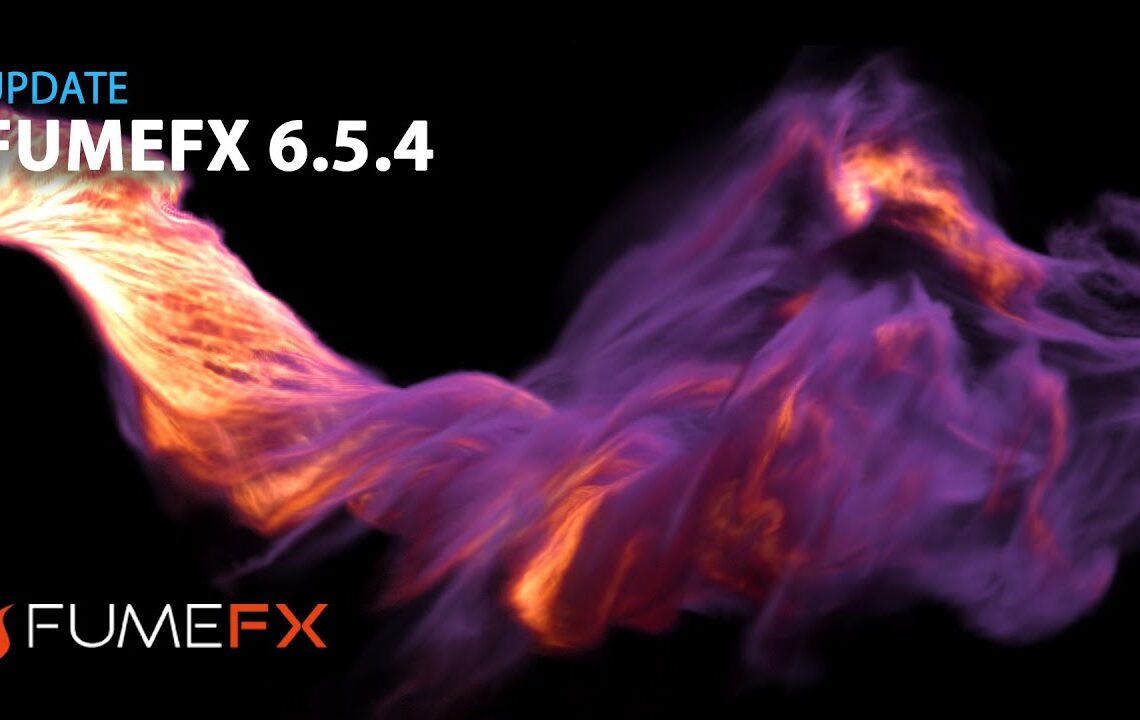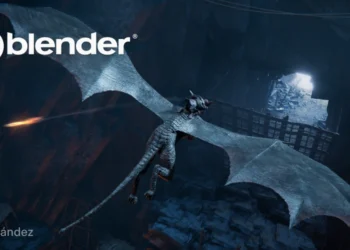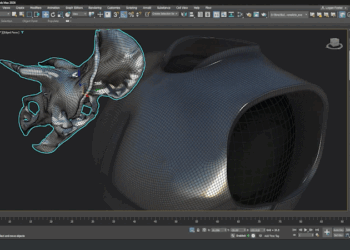Sitni Sati has updated FumeFX to version 6.5.4, introducing new features and improvements focused on particle control and integration with third-party plugins. The FumeFX Particle Source object now includes an option for user-defined particle lifespan, which is particularly beneficial for tyFlow users who require lifespan data for accurate AFC control operation.
NodeWorks has expanded its functionality with a new 3ds Max particle interface option, allowing users to work with particle groups and PBD liquid particles, improving integration with external tools such as tyFlow. A new Propagate node has been introduced, enabling the transfer of attributes between nearby particles. The Spline Force node now includes a Spline Lock option to ensure particles follow their assigned spline, preventing them from switching based on proximity. A Spline Index input pin has also been added, allowing procedural selection of splines for individual particles.
Additional refinements include renaming the Color node to Color Const and the introduction of a new Color node for quick reading and writing of particle color attributes. The Object Info node now provides detailed object data, including vertex count, surface area, and volume. The Initialize Grid node has been enhanced with voxel grid expansion options, similar to FumeFX controls. Updates to the Speed, Scale, Mass, and Position nodes introduce a Blend option for smooth transitions between user-defined and existing particle values. The Force node now supports Read, Set, and Add operations, while the Spin node has been updated to include Read, Set, Add, and Blend options. The Display Attributes node has been improved with an option to display particle Spin attributes.
For more details, visit Sitni Sati’s website.








Does anyone else feel like it’s a waste of resources? It’s never going to beat Thinking Particles or Tyflow – but all this particle development is taking resources away from fluids development that I still feel is the whole point of FFX? Just go into collaboration with TyFlow – maybe sell bundles – and just focus on the fluids :/
Hello,
Thank you for your though. The point of FumeFX is to have a complete VFX tool that is tightly integrated with Arnold renderer. Inside the NodeWorks there are already many FumeFX and voxel bases nodes that no other package in 3ds max offers and we will build on that. As for particles, users are free to use tf or tp, but to get the most of it, they can be imported into the NodeWorks. Such Flexibility offers users maximum control and we will continue in that direction.
@kaczorefx, first of all, no one is forcing you to use FFX, and I don´t think that the original idea were to outperform, or to make a better fluid tool than tP or tyFlow, which is not that great tools for fluids either. If you only do fluids, there is Phoenix and the default fluids inside of max.
It´s hard to make a similar, or better fluid tool than Phoenix. FFX, like tP and tyFlow, are not only tools for fluids, they do a lot of other stuff as well. So if it´s only fluids you are after, use Phoenix.
Last, the fluids part of FFX is new to FFX, meaning it takes a long time to add, tweak and finetune everything. Fluids are complex stuff and not so easy to code, so give the developers more time.
Who knows, perhaps they add more fluid related stuff to it later, and perhaps they also implement FLIP, but it takes time.
When I said fluids – I meant fluid simulations – so water too, but mainly smoke and fire, so the core of what FFX is. I still find FFX better at this than Phoenix – but there is still much more that can be done. Fluid sims can be much faster – embergen but especially Final Fluids from Cebas showed us. My point about particles was this – if you’re working professionally, you’ve got deadlines, and when you have deadlines an absolute worst thing that can happen to you is get the project 90% done and find out you’ve reached the limit of what your software can do and to get your project done, you have to redo all of it in different software – I think that is the main reason why Blender is not used in the industry. It doesn’t matter that I can do 95% of my work already in Blender – it’s that last 5% that scares the sh$% out of me. I just can’t allow myself to be in a situation where I have to redo the project just because my new software is missing some feature or it doesn’t work as it should.. And now back to FFX – it’s great that we can program particles now and it’s getting better and better. But until I can do an entire destruction scene with dynamic fracturing, physics, hierarchical joints etc. I will not use the particles in FFX. I’m going to use TP or TF for the scene and just dedicate a group of their particles as FFX emitters. Basically to make particles in FFX a viable professional tool Kresimir would have to make them the best particle system available for 3ds Max, and what is the chance of that? I don’t know, that is my personal opinion of course – but I’ve been there at the beginning of TP (hell I remember the beginning of PFlow) and I know how long it takes for a particle system to mature – so we’re looking at 6-10 years of development before us, where all that time could have been put into fluid simulations. There is just a limited amount of time developers have, you can’t do everything, sometimes you have to kill your darlings :/
@kaczorefx
We have a bigger picture why we add certain things, so everything will come into place with time. Past two years have been our most productive year in the 25 years history. Although it might not seem like it, NodeWorks in FumeFX 6 does have focus on FumeFX. Before, the level of control that NodeWorks provide was not possible at all. NodeWorks also allowed us to add PhysX to interacts with our new GPU Liquid and FumeFX to interact with cloth, particles and other components. For most of the FumeFX related tasks, NodeWorks is self-sufficient and does not require any other 3rd party particle system.
Now with FumeFX 6.7 around the corner, we have added C# scripting support for particles, voxels and FumeFX with plenty of supporting functions.
Suggestions are very welcome so feel free to email us at any time.
To get the latest development information, there is our facebook group:
https://www.facebook.com/groups/164868190323236
The problem with smoke type fluid sims ( not water, nothing is going to beat phoenix in water when its only rival is houdini water sims in the market). The issue with both phoenix and fumefx when it comes to their sims, especially smoke sims is that its too damn slow. I think its about time gpu sims are more utilized without going to embergen lower quality look. Im looking more into how Houdini has the speed for its smoke and dire sims utilizing gpu while producing the best results.
I think we have enough features when it comes to core control and functionality especially now with tyflow integration for both phoenix and Fume.